Filtered By: Newstv
NewsTV
Colorful Zamboanga: A ‘Biyahe ni Drew’ itinerary
"Biyahe ni Drew” is a weekly travel show hosted by Drew Arellano. It airs every Friday night at 8:00 p.m. on GMA News TV. Follow the “Biyahe ni Drew” Facebook page and Twitter account for updates from the show.
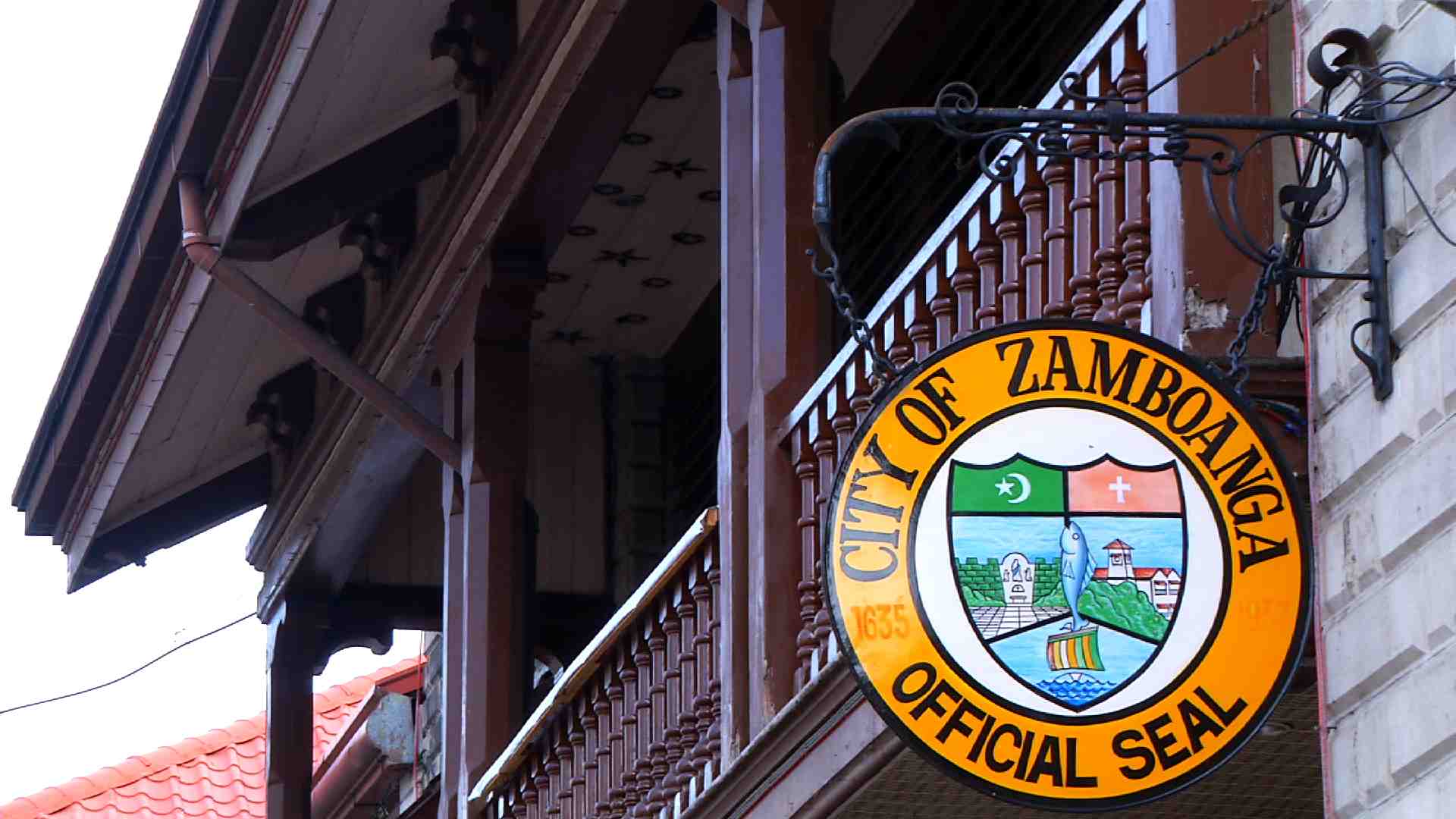
Zamboanga City is called “Asia’s Latin City” because of its musical Spanish-tinged Chabacano language, which dates back to the 1600s. With its rich history, colorful culture and delicious seafood, Zamboanga deserves a spot on your list of must-visit summer vacation destinations.
Here’s the itinerary that Drew Arellano and the crew of GMA News TV’s “Biyahe ni Drew” used during their recent visit.
How to get there
By air. Flying to Zamboanga City from Manila takes an hour and a half. You can also opt to take scheduled flights via Cebu Pacific Air from Davao, Cebu and Iloilo.
Getting around. There are no taxis here, so the most convenient means of travel is a tricycle. Make sure to negotiate the fare before getting in.
Where to stay
There are plenty of affordable accommodations in Zamboanga City, from hostels to budget hotels.
Daniel’s Hotel
Tumaga, Zamboanga City
Rooms in Daniel’s Hotel are small but you can count on the basics with two single beds, one refrigerator, a flat screen television, and private bath for P1,000 a night, good for two. For bigger groups, they have dormitory rooms that cost P350 a night.
Garden Orchid Hotel
Governor Camins Avenue, Zamboanga City
For those willing to splurge, a pool-side deluxe room with two single beds can cost around P4,500 a night. All rooms are air-conditioned with a flat screen satellite television, refrigerator, and private bath. Group rates are available upon request.
What to eat
Knickerbocker Glory
Palmeras, Sta. Maria Road, Zamboanga City
Stay cool under the blazing sun with the “Knickerbocker Glory,” the United Kingdom’s own version of an ice cream sundae. This colorful dessert gets its unique name because it resembles the dresses ladies from the UK once wore.
Its pink color comes from the strawberry ice cream that sits on top of fresh fruits and milk. Try a cup for P75!
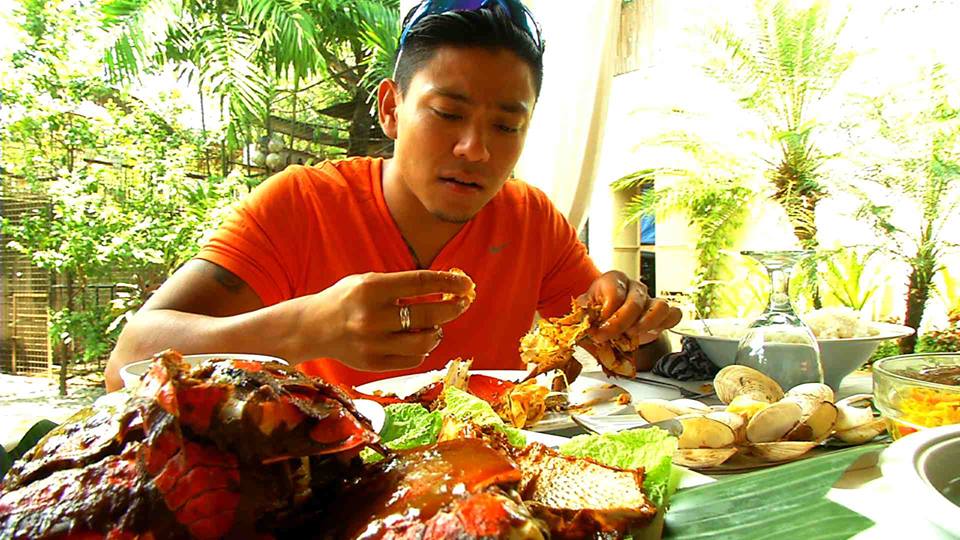
“Curacha” at Alavar Seafood House
Don Alfaro St., Zamboanga City
For a taste of Zamboanga’s famous seafood, head to Alavar Seafood House. They have everything from buttered clams to barbecued blue marlin belly.
But no trip to Zamboanga is complete without trying curacha — a lobster and crab hybrid cooked in gata with just the right amount of spices. Extra hungry diners can have an extra large serving for P1,050.
Drew recommends eating the dish with your hands: “Kapag hindi madumi mukha mo, hindi mo kinakain ‘yung totoo.”
Zamboanga White
Pair your yummy seafood and inihaw dishes with a “Zamboanga White,” a drink served in many restaurants and hotels. The refreshing fresh fruit shake is made from milk, sugar, lychees and pineapple. “It’s interesting and definitely worth a try,” said Drew.
What to see and do
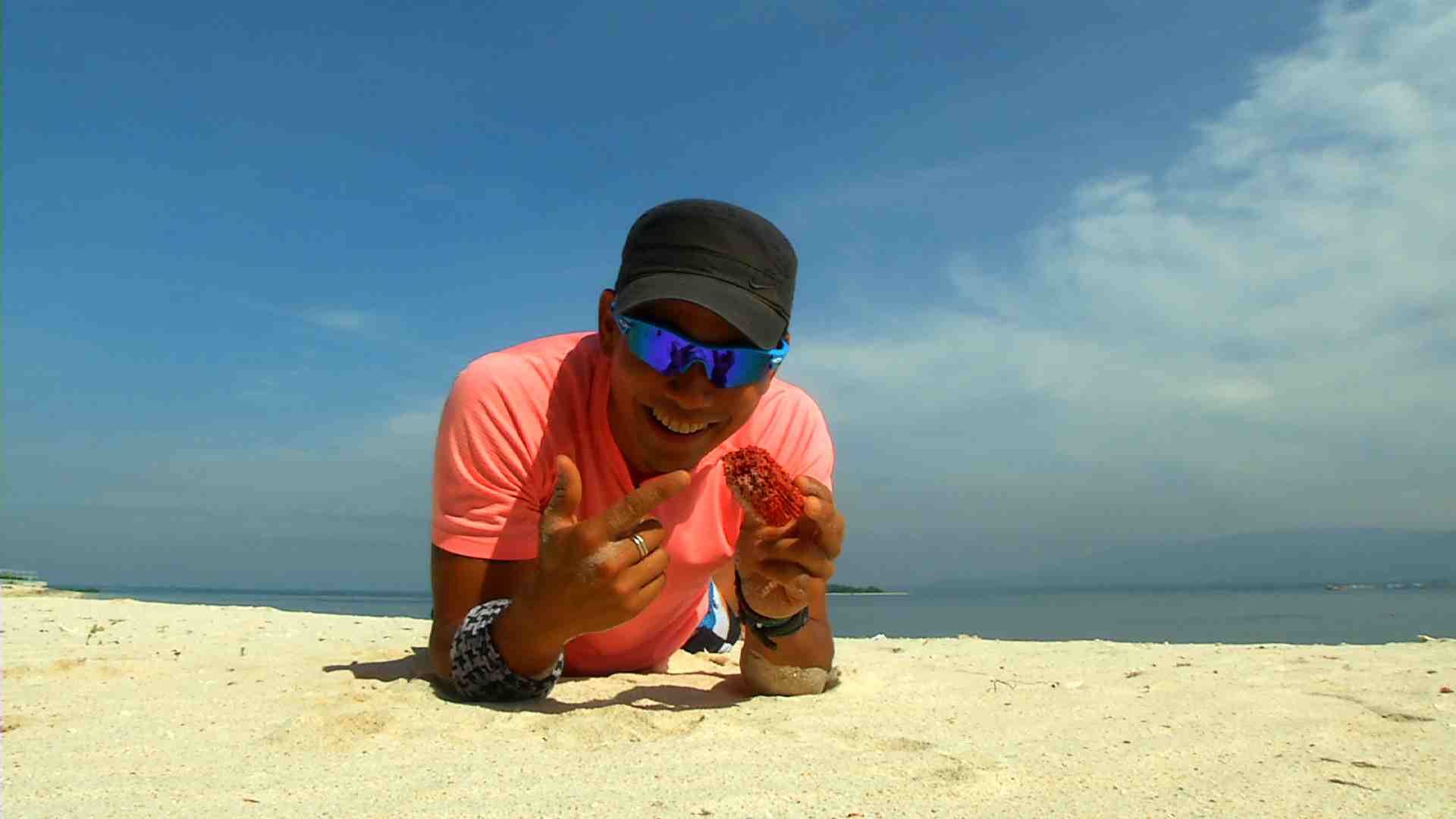
Pink Sand Beach
Santa Cruz Island
While most other tourist beaches in the Philippines boast of their white sand, the sand on Santa Cruz Island gets its unique pink color from red corals that wash up on the shore and get broken down by strong waves. To visit the island, take a 20-minute boat ride from the docks of Paseo del Mar, Zamboanga’s seaside parkway located along Valderoza Street. You can also go snorkeling at Santa Cruz Island.
Just a friendly reminder: don’t take home the red corals if you want the beach to stay pink!
Badjao ancient burial sites
Santa Cruz Island
Once you’ve had your fill of snorkelling, you can also head to the ancient burial sites of the Badjao tribes, also on Santa Cruz Island. Since the 1900s, the Badjao people have buried their loved ones in the island. There are boats that mark every tomb, each bearing a different design to signify the person’s stature in their society. It is believed that these boats are the Badjao’s means of transportation to the next life.
Fort Pilar
N.S. Valderosa Street, Zamboanga City
Located near the ferry terminal to Santa Cruz Island is Fort Pilar, a 17th-century Spanish military fort. Here you can light a candle at the shrine of La Virgen del Pilar, Zamboanga City’s beloved patroness, believed by locals to grant miracles. The feast day of La Virgen del Pilar every October 12 is even more celebrated than the city’s official feast day.
To learn about Zamboanga’s history and culture, check out the Fort Pilar museum, which houses collections of indigenous crafts and archaeological artifacts, as well as exhibits on the wildlife and geological history of Zamboanga.
Merloquet Falls
Sitio Merloquet, Brgy. Sibulao, Zamboanga City
Take out your camera and pay a visit to picturesque Merloquet Falls, which from afar looks like a white curtain pinned to a lush forest wall. The water is usually too shallow for swimming, except during rainy season, but even just sitting beneath the falls is a great way to beat the heat.
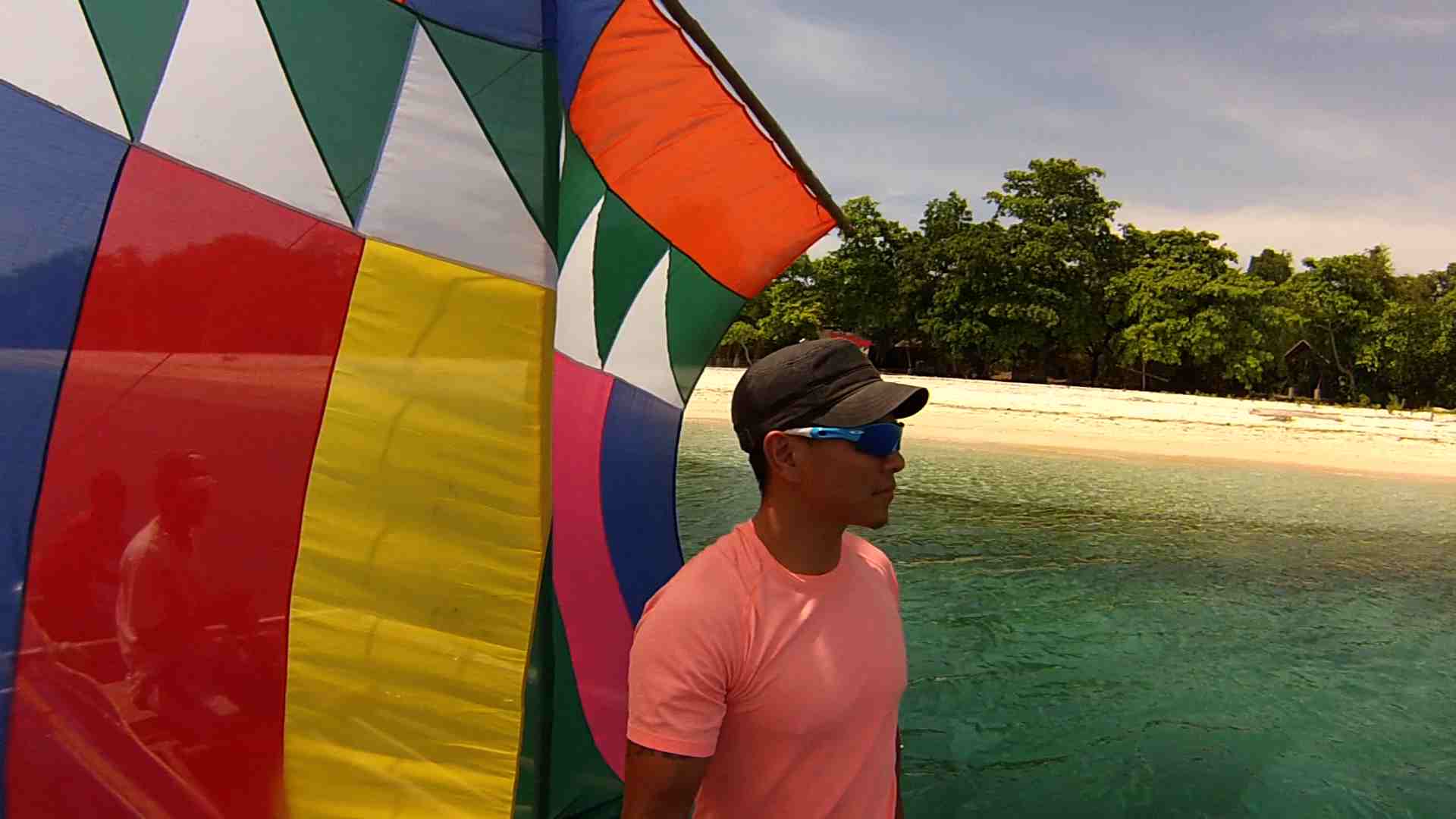
Ride a traditional “vinta”
Paseo del Mar, Zamboanga City
A vinta is a traditional boat used by the Badjaos of Zamboanga. The colorful sails of the vinta are said to symbolize the colorful Badjao culture. “Iba rin ang experience,” shared Drew. “Hinahayaan mo lang ang hangin na dalhin ka kung saan ka patungo.”
The relaxed P30 ride may not be for adrenaline junkies, but it’s a great photo opportunity!
What to buy for pasalubong
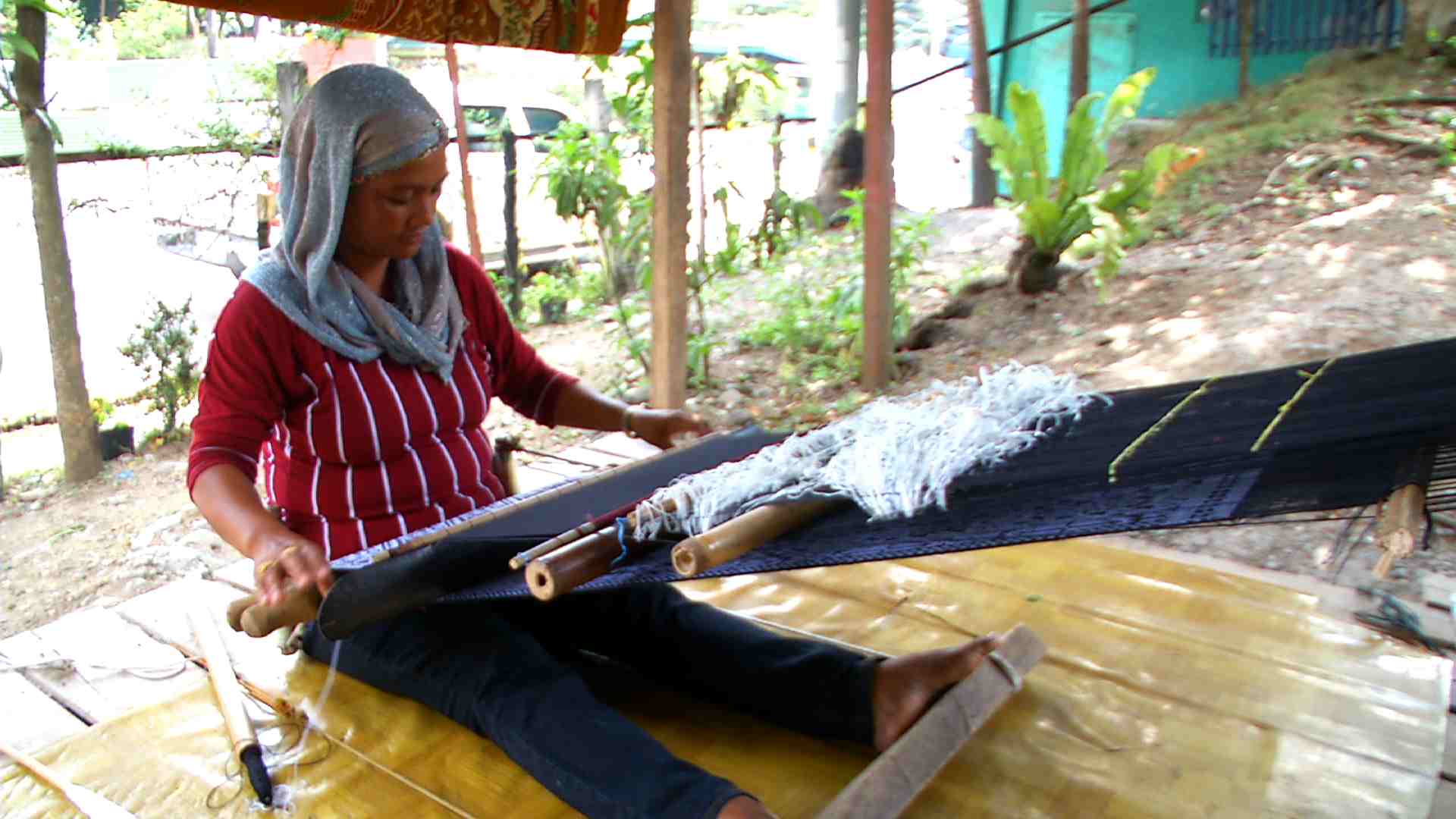
Woven goods
Head over to the Yakan Weaving Village in Barangay Upper Calarian to not only buy colorful table runners, placemats, and wallets, but also to watch the locals weave them! It takes between a week and a month to weave their products, depending on the intricacy of the design.
Here’s a useful shopping tip: “Magkano ito?” in Chabacano is “Cuanto este?”
—Aimee Dacanay/PF, GMA News

Zamboanga City is called “Asia’s Latin City” because of its musical Spanish-tinged Chabacano language, which dates back to the 1600s. With its rich history, colorful culture and delicious seafood, Zamboanga deserves a spot on your list of must-visit summer vacation destinations.
Here’s the itinerary that Drew Arellano and the crew of GMA News TV’s “Biyahe ni Drew” used during their recent visit.
How to get there
By air. Flying to Zamboanga City from Manila takes an hour and a half. You can also opt to take scheduled flights via Cebu Pacific Air from Davao, Cebu and Iloilo.
Getting around. There are no taxis here, so the most convenient means of travel is a tricycle. Make sure to negotiate the fare before getting in.
Where to stay
There are plenty of affordable accommodations in Zamboanga City, from hostels to budget hotels.
Daniel’s Hotel
Tumaga, Zamboanga City
Rooms in Daniel’s Hotel are small but you can count on the basics with two single beds, one refrigerator, a flat screen television, and private bath for P1,000 a night, good for two. For bigger groups, they have dormitory rooms that cost P350 a night.
Garden Orchid Hotel
Governor Camins Avenue, Zamboanga City
For those willing to splurge, a pool-side deluxe room with two single beds can cost around P4,500 a night. All rooms are air-conditioned with a flat screen satellite television, refrigerator, and private bath. Group rates are available upon request.
What to eat
Knickerbocker Glory
Palmeras, Sta. Maria Road, Zamboanga City
Stay cool under the blazing sun with the “Knickerbocker Glory,” the United Kingdom’s own version of an ice cream sundae. This colorful dessert gets its unique name because it resembles the dresses ladies from the UK once wore.
Its pink color comes from the strawberry ice cream that sits on top of fresh fruits and milk. Try a cup for P75!

“Curacha” at Alavar Seafood House
Don Alfaro St., Zamboanga City
For a taste of Zamboanga’s famous seafood, head to Alavar Seafood House. They have everything from buttered clams to barbecued blue marlin belly.
But no trip to Zamboanga is complete without trying curacha — a lobster and crab hybrid cooked in gata with just the right amount of spices. Extra hungry diners can have an extra large serving for P1,050.
Drew recommends eating the dish with your hands: “Kapag hindi madumi mukha mo, hindi mo kinakain ‘yung totoo.”
Zamboanga White
Pair your yummy seafood and inihaw dishes with a “Zamboanga White,” a drink served in many restaurants and hotels. The refreshing fresh fruit shake is made from milk, sugar, lychees and pineapple. “It’s interesting and definitely worth a try,” said Drew.
What to see and do

Pink Sand Beach
Santa Cruz Island
While most other tourist beaches in the Philippines boast of their white sand, the sand on Santa Cruz Island gets its unique pink color from red corals that wash up on the shore and get broken down by strong waves. To visit the island, take a 20-minute boat ride from the docks of Paseo del Mar, Zamboanga’s seaside parkway located along Valderoza Street. You can also go snorkeling at Santa Cruz Island.
Just a friendly reminder: don’t take home the red corals if you want the beach to stay pink!
Badjao ancient burial sites
Santa Cruz Island
Once you’ve had your fill of snorkelling, you can also head to the ancient burial sites of the Badjao tribes, also on Santa Cruz Island. Since the 1900s, the Badjao people have buried their loved ones in the island. There are boats that mark every tomb, each bearing a different design to signify the person’s stature in their society. It is believed that these boats are the Badjao’s means of transportation to the next life.
Fort Pilar
N.S. Valderosa Street, Zamboanga City
Located near the ferry terminal to Santa Cruz Island is Fort Pilar, a 17th-century Spanish military fort. Here you can light a candle at the shrine of La Virgen del Pilar, Zamboanga City’s beloved patroness, believed by locals to grant miracles. The feast day of La Virgen del Pilar every October 12 is even more celebrated than the city’s official feast day.
To learn about Zamboanga’s history and culture, check out the Fort Pilar museum, which houses collections of indigenous crafts and archaeological artifacts, as well as exhibits on the wildlife and geological history of Zamboanga.
Merloquet Falls
Sitio Merloquet, Brgy. Sibulao, Zamboanga City
Take out your camera and pay a visit to picturesque Merloquet Falls, which from afar looks like a white curtain pinned to a lush forest wall. The water is usually too shallow for swimming, except during rainy season, but even just sitting beneath the falls is a great way to beat the heat.

Ride a traditional “vinta”
Paseo del Mar, Zamboanga City
A vinta is a traditional boat used by the Badjaos of Zamboanga. The colorful sails of the vinta are said to symbolize the colorful Badjao culture. “Iba rin ang experience,” shared Drew. “Hinahayaan mo lang ang hangin na dalhin ka kung saan ka patungo.”
The relaxed P30 ride may not be for adrenaline junkies, but it’s a great photo opportunity!
What to buy for pasalubong

Woven goods
Head over to the Yakan Weaving Village in Barangay Upper Calarian to not only buy colorful table runners, placemats, and wallets, but also to watch the locals weave them! It takes between a week and a month to weave their products, depending on the intricacy of the design.
Here’s a useful shopping tip: “Magkano ito?” in Chabacano is “Cuanto este?”
—Aimee Dacanay/PF, GMA News
More Videos
Most Popular




